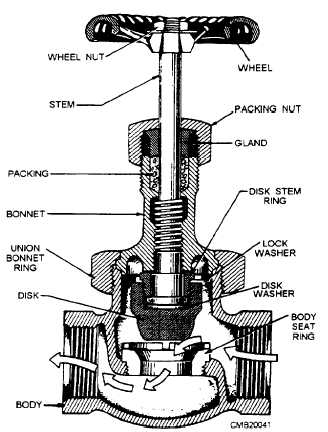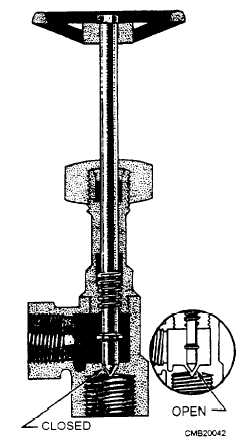1. Adjusting screw
2. Adjusting screwcap
3. Spring
4. Return port
5. Ball
6. Pressure port

Figure 3-21. - Typical relief valve.

Figure 3-19. - Globe valve.
system are the poppet (fig. 3-25), rotary spool (fig. 3-26), and sliding spool valves (fig. 3-27).

Figure 3-20. - Cross-sectional view of a needle valve.
Cylinders
An actuating cylinder is a device that converts fluid power to linear motion, or straight-line force and motion. Since linear motion is a back-and-forth motion along a straight line, this type of actuator is sometimes referred to as a reciprocating. The cylinder consists of a ram or piston operating within a cylindrical bore. Actuating cylinders may be installed so that the cylinder is anchored to a stationary structure and the ram or piston is attached to the mechanism to be operated, or the piston or ram may be anchored to the stationary structure and the cylinder attached to the mechanism to be operated.
RAM-TYPE CYLINDERS. - The terms ram and piston are often used interchangeably. However, a ram-type cylinder is usually considered one in which the cross-sectional area of the piston is more than one halfofthe cross-sectional area of the movable element. In most actuating cylinders of this type, the rod and the 3-12
Continue Reading